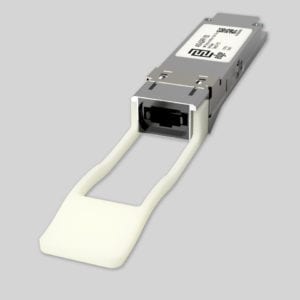Juniper QSFP 40G Optics compatible portfolio – the entire Juniper 40G transceiver compatibles range to build efficiently and with ease.
| Home | / |
Products | / |
Juniper | / |
40G Transceivers |
|---|
Compatible Juniper QSFP 40G Transceivers
We’ve matched our available compatible Juniper QSFP 40G Transceiver portfolio to the QSFP Juniper 40G Model Names and Part Numbers for ease of identification, because many engineers around the world are familiar with the Juniper 40G optics nomenclature.
The industry’s second-generation pluggable 40Gbps optical transceiver standard is the QSFP+ (Quad Small Form-factor Pluggable Plus) form factor. The first was the CFP form factor. Juniper QSFP 40G data rates are 40Gbps (4x 10Gbps) and are compatible with QSFP+ ports. Juniper’s compatible 40G transceiver portfolio is built around our 40G product line, which is compliant with IEEE802.3bm, SFF-8436, and other relevant standards, as well as other IEEE-compliant 40GBASE interfaces. We can configure any transceiver in our product line to work successfully on Juniper systems, allowing engineers to build their network efficiently and with ease. Our Juniper 40G transceiver selection could be substantially larger than the manufacturer’s. If you have any questions, please contact us!
Juniper 40G QSFP Optics
Our Juniper QSFP 40G transceiver lineup includes the most popular QSFP Juniper compatible optics, including 40GBASE-SR4, 4X10GE-SR, 40GBASE-LR4 , 40G-LX4, 4X10GE-LR, 4X10GE-IR, 40GBASE-ER4 and 40G-BXSR modules. Our Juniper 40G QSFP alternatives can be used for 40G interconnections and for 40G to 4x10G breakout interconnections using a 12-fiber parallel to 2-fiber duplex breakout cable, which connects the 40GBASE Transceiver to four 10GBASE optical interfaces. Using double LC you can start from up to 2 kilometers over a standard pair of G.652 Single-Mode Fiber (SMF), and end with LR4 and ER4, which are the preferred choices for remote site connections at 40G speeds. To cover a range of distances from 10 to 40 kilometers, LR4 and ER4 compatible Juniper 40G optics make use of four 1310nm LAN WDM wavelengths that are located in the 1310nm band.














